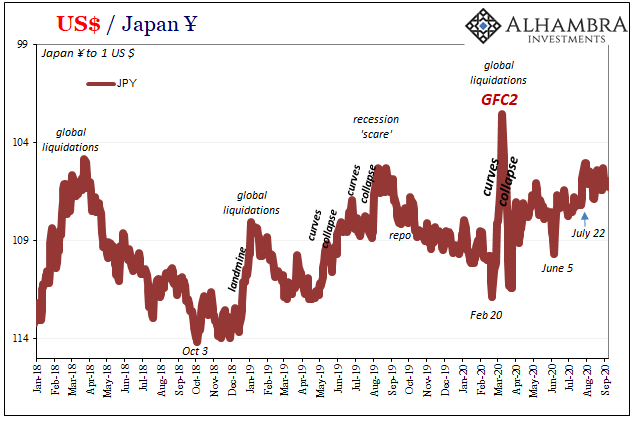Although there is no convincing technical evidence that dollar's retreat in Q1 is over, we suspect it is nearly complete. We will be especially sensitive to reversal patterns, divergences with technical indicators, and other signs that the move is exhausted.
The fundamental economic driver of our medium term constructive outlook for the US dollar, the divergence of monetary policy between the major central banks, relative health of the financial sector, and absorption of capacity, remains intact.
Like most, we never thought the Federal Reserve would hike rates four times this year, as it had suggested through its dot plot last December. Yet we think the market is discounting only one hike (at the very end of the year), is also mistaken. We are not convinced that the ECB and BOJ have exhausted scope for monetary easing. We remain concerned of a new flare-up of European tensions later in the quarter.
The US premium over Germany and Japan narrowed as the dollar fell in recent weeks. By the end of last week, the premiums had stabilized and preliminarily began moving back in the dollar's favor. The widening premiums appear to be a necessary precondition of a firmer dollar.
The Dollar Index held support near 94.00, but the bounce was uninspiring and new low looks likely. The mid-October low was seen near 93.80, and the lower Bollinger Band finished last week near 93.75. Barring a new shock, we do not expect the Dollar Index to return to last August's low set near 92.60.
The euro spent most of the last week confined to the ranges set on April 1 when the US March jobs data were released. The range that day was $1.1335 to about $1.1440. Provided the $1.1300 area holds, the euro can work a bit higher. Marginal new highs toward $1.1500 cannot be ruled out. However, there are preliminary signs that caution against chasing the market here. The RSI did not confirm the high set on April 7, and the MACDs are poised to turn lower.
The yen has been a tear. It rose 2.85% last week and is up a whopping 11.6% since the BOJ surprised the world by adopting negative interest rates at the end of January. The dollar fell to nearly JPY107.65 before stabilizing ahead of the weekend. A head and shoulders pattern on the weekly bar charts projects toward JPY107, while the 38.2% retracement of the Abe-inspired yen decline, is found near JPY106.80.
The yen is a stretch as illustrated by the weekly close below the lower Bollinger Band (~JPY108.85). However, there have been a few weekly downdrafts of the dollar that were larger, without sparking an intervention. We also recognize some preliminary sign that seasonality is playing a role. Of the past 11 years, the dollar has fallen in seven of the Aprils, including four of the past five.
Sterling stabilized after testing the $1.40 level in the middle of last week. Nevertheless, three-month (implied) volatility remains elevated near 16%. The premium for puts over calls (three-moth) remains near record levels (~4.6%). This suggests that the pressure in the spot market may be obscured by the general weak US dollar profile. Initial support is seen near $1.4040. Sterling can firm toward $1.4160-$1.4180, but a move toward $1.4250 will likely to bring in fresh sellers.
Stronger than expected jobs data and the recovery in oil prices underpinned the Canadian dollar. The US dollar had appeared to be carving out a bottom against the Canadian dollar. The RSI and MACDs bottomed in the middle of March, and the downtrend line from the multiyear high just below CAD1.47 on January 20 was violated. However, the greenback failed to get much traction. Initial support is seen near CAD.1.2925, and then the end of March low near CAD1.2860.
After rallying nearly 13.3% from the middle of January through the end of March, the Australian dollar is looking stretched from a technical perspective. There are bearish divergences with the MACDs and RSI failing to confirm the high at the end of March. Nevertheless, there was no follow-through selling after the outside down day on April 7. A move above $0.7580 could spur a move toward $0.7635. Key support is seen in the $0.7480 area, and a convincing break would support our idea that a top is being forged.
May crude oil peaked on March 18 near $42.50. It fell to $35.25 on April 5. The rebound to $39.85 before the weekend completed a 61.8% retracement of the decline. The 6% rally before the weekend was the largest advance since February. The technical indicators suggest there is potential to return to the $42.50 high and possibly toward $44.00-$45.00
The technical indicators are less clear in US 10-year Treasuries, but we suspect that last week's high near 131-09 basis the June futures contract may have approached what will be the high for the move. The high for the second half of February was set near 131-14. A break of the 130-16 area would lend support to the idea that a top is in place. Regarding yields, the 1.65%-1.68% area may be the low point.
The measuring objective of the "W" bottom carved out by the S&P 500 in January and February had had a measuring objective near 2100. The April 1 high was 2075. The technical tone is weakening as the earnings season begins in earnest (Alcoa on April 11) and during earnings season, companies, which are among the featured equity buyers, are sidelined. The MACDs have rolled over, and the five-day moving average is set to move below the 20-day average for the first time since February 19. The first downside target isnear 2000.
Tags: Japanese yen,newslettersent,SPY










































